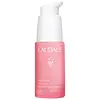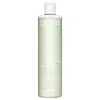What's inside
What's inside
 Key Ingredients
Key Ingredients

 Benefits
Benefits

 Concerns
Concerns

 Ingredients Side-by-side
Ingredients Side-by-side

Water
Skin ConditioningVitis Vinifera Fruit Water
Skin ConditioningGlycerin
HumectantButylene Glycol
HumectantEthylhexyl Palmitate
EmollientPalmitoyl Grape Seed Extract
Skin ConditioningPolyacrylate Crosspolymer-6
Emulsion StabilisingCaprylyl Glycol
EmollientSqualane
EmollientVitis Vinifera Juice
AntioxidantXanthan Gum
EmulsifyingSorbitan Oleate
EmulsifyingSodium Carboxymethyl Beta-Glucan
CleansingCitric Acid
BufferingHyaluronic Acid
HumectantSorbitan Laurate
EmulsifyingSodium Phytate
Sodium Benzoate
MaskingSodium Hydroxide
BufferingDisodium Acetyl Glucosamine Phosphate
Skin ConditioningPotassium Sorbate
PreservativeMyristyl Malate Phosphonic Acid
Skin ConditioningParfum
MaskingWater, Vitis Vinifera Fruit Water, Glycerin, Butylene Glycol, Ethylhexyl Palmitate, Palmitoyl Grape Seed Extract, Polyacrylate Crosspolymer-6, Caprylyl Glycol, Squalane, Vitis Vinifera Juice, Xanthan Gum, Sorbitan Oleate, Sodium Carboxymethyl Beta-Glucan, Citric Acid, Hyaluronic Acid, Sorbitan Laurate, Sodium Phytate, Sodium Benzoate, Sodium Hydroxide, Disodium Acetyl Glucosamine Phosphate, Potassium Sorbate, Myristyl Malate Phosphonic Acid, Parfum
Water
Skin ConditioningAlcohol Denat.
AntimicrobialRosa Damascena Flower Water
MaskingVitis Vinifera Fruit Water
Skin ConditioningCaprylyl/Capryl Glucoside
CleansingVitis Vinifera Juice
AntioxidantSalicylic Acid
MaskingCymbopogon Citratus Leaf Oil
MaskingLavandula Hybrida Oil
EmollientMelissa Officinalis Leaf Oil
MaskingMentha Piperita Oil
MaskingPelargonium Graveolens Flower Oil
MaskingRosmarinus Officinalis Leaf Oil
MaskingPotassium Sorbate
PreservativeSodium Benzoate
MaskingSodium Phytate
Arginine
MaskingCitric Acid
BufferingCitral
PerfumingCitronellol
PerfumingGeraniol
PerfumingLimonene
PerfumingLinalool
PerfumingWater, Alcohol Denat., Rosa Damascena Flower Water, Vitis Vinifera Fruit Water, Caprylyl/Capryl Glucoside, Vitis Vinifera Juice, Salicylic Acid, Cymbopogon Citratus Leaf Oil, Lavandula Hybrida Oil, Melissa Officinalis Leaf Oil, Mentha Piperita Oil, Pelargonium Graveolens Flower Oil, Rosmarinus Officinalis Leaf Oil, Potassium Sorbate, Sodium Benzoate, Sodium Phytate, Arginine, Citric Acid, Citral, Citronellol, Geraniol, Limonene, Linalool
 Reviews
Reviews

Ingredients Explained
These ingredients are found in both products.
Ingredients higher up in an ingredient list are typically present in a larger amount.
Citric Acid is an alpha hydroxy acid (AHA) naturally found in citrus fruits like oranges, lemons, and limes.
Like other AHAs, citric acid can exfoliate skin by breaking down the bonds that hold dead skin cells together. This helps reveal smoother and brighter skin underneath.
However, this exfoliating effect only happens at high concentrations (20%) which can be hard to find in cosmetic products.
Due to this, citric acid is usually included in small amounts as a pH adjuster. This helps keep products slightly more acidic and compatible with skin's natural pH.
In skincare formulas, citric acid can:
While it can provide some skin benefits, research shows lactic acid and glycolic acid are generally more effective and less irritating exfoliants.
Most citric acid used in skincare today is made by fermenting sugars (usually from molasses). This synthetic version is identical to the natural citrus form but easier to stabilize and use in formulations.
Read more about some other popular AHA's here:
Learn more about Citric AcidPotassium Sorbate is a preservative used to prevent yeast and mold in products. It is commonly found in both cosmetic and food products.
This ingredient comes from potassium salt derived from sorbic acid. Sorbic acid is a natural antibiotic and effective against fungus.
Both potassium sorbate and sorbic acid can be found in baked goods, cheeses, dried meats, dried fruit, ice cream, pickles, wine, yogurt, and more.
You'll often find this ingredient used with other preservatives.
Learn more about Potassium SorbateSodium Benzoate is a preservative. It's used in both cosmetic and food products to inhibit the growth of mold and bacteria. It is typically produced synthetically.
Both the US FDA and EU Health Committee have approved the use of sodium benzoate. In the US, levels of 0.1% (of the total product) are allowed.
Sodium benzoate works as a preservative by inhibiting the growth of bacteria inside of cells. It prevents the cell from fermenting a type of sugar using an enzyme called phosphofructokinase.
It is the salt of benzoic acid. Foods containing sodium benzoate include soda, salad dressings, condiments, fruit juices, wines, and snack foods.
Studies for using ascorbic acid and sodium benzoate in cosmetics are lacking, especially in skincare routines with multiple steps.
We always recommend speaking with a professional, such as a dermatologist, if you have any concerns.
Learn more about Sodium BenzoateSodium Phytate is the synthetic salt form of phytic acid. Phytic acid is an antioxidant and can be found in plant seeds.
Sodium Phytate is a chelating agent. Chelating agents help prevent metals from binding to water. This helps stabilize the ingredients and the product.
Vitis Vinifera Juice comes from grapes.
Grapes are rich in skin conditioning ingredients, such as Vitamin E and Vitamin C. It also contains many potent antioxidants: proanthocyanidins, polyphenols, flavonoids, and anthocyanins. Proanthocyanidin has been shown to help even out skin tone.
Antioxidants help fight free-radical molecules. Free-radical molecules are capable of damaging our cells and other genetic material. Antioxidants help stabilize free-radicals by donating extra electrons.
This ingredient may help reduce the signs of aging.
Learn more about Vitis Vinifera JuiceWater. It's the most common cosmetic ingredient of all. You'll usually see it at the top of ingredient lists, meaning that it makes up the largest part of the product.
So why is it so popular? Water most often acts as a solvent - this means that it helps dissolve other ingredients into the formulation.
You'll also recognize water as that liquid we all need to stay alive. If you see this, drink a glass of water. Stay hydrated!
Learn more about Water